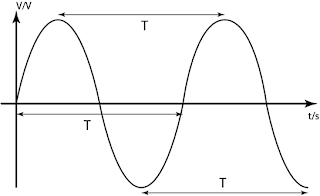Direct Current
- Direct current is a uniform current flowing in one fixed direction in a circuit
- Direct current (d.c) is usually supplied by acid-based batteries or dry cells.
- A common example of acid-based (electrolyte) batteries is the car battery.
- The figure below shows the graph of current supplied by a dry cell over time.
Alternating Current
- Alternating current is an electric current in which the direction of flow of the electrons reverses periodically
- Alternating current (a.c) is generated from alternating current generators such as hydroelectric power generators.
- The electricity supplied to households is alternating current.
- Household electricity (alternating current) changes direction 50 times every second. Its magnitude also changes with time.
- The time taken for one complete cycle is known as the period, T.
- The frequency f is defined as the number of complete cycles in 1 second.
- The relationship between the frequency and the period is:
- In SPM, you need to know the effect of both the direct current and alternating current on
- a bulb
- a capacitor
- a moving coil loudspeaker
- The table below gives the summary of the comparison of the effect of direct current and alternating on a bulb, a capacitor and a moving coil loudspeaker.
| Direct Current | Alternating Current | |
| Effects on a bulb | The bulb lights up | The bulb lights up |
| Effects on a capacitor | Current is detected at the very beginning and then ceased to become zero afterwards. | Current is detected |
| Effects on moving coil loudspeaker | No sound produced | Sound produced |


